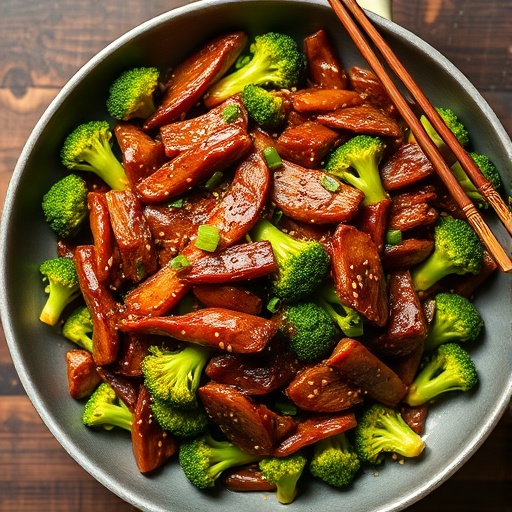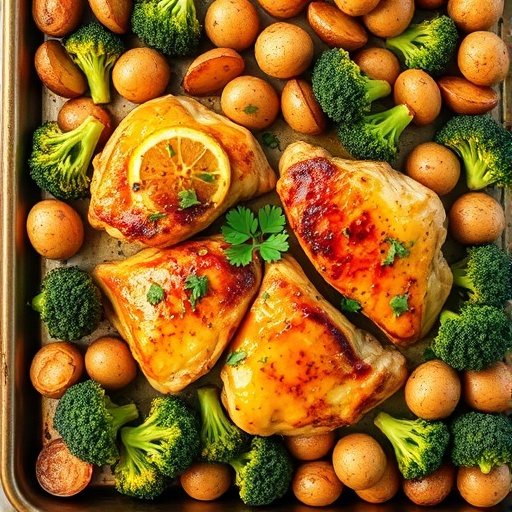Introduction
Did you know that 75% of party hosts feel overwhelmed by food preparation, often opting for pre-made snacks that lack that personal touch? This statistic might make you wonder, "Can I really create a show-stopping, crowd-pleasing centerpiece that's both beautiful and easy to assemble?" While many believe elaborate party food requires hours in the kitchen, I'm here to challenge that notion. With a bit of strategic planning and a few clever tricks, crafting an unforgettable charcuterie board can be a surprisingly simple and incredibly rewarding experience. Forget the stress; let's dive into creating a delicious masterpiece that will be the talk of your next gathering.
Ingredients List
To embark on your charcuterie board adventure, think of it as an artistic canvas awaiting vibrant flavors and textures. Here's a curated list, designed for both novice and experienced hosts, along with delightful alternatives to spark your creativity:
- Cured Meats (4-5 varieties): Aim for a mix of textures and flavors. Think thinly sliced prosciutto, spicy soppressata, smoky salami, and delicate coppa. Alternative: For a vegetarian option, marinated artichoke hearts or sun-dried tomato spreads can offer a similar savory depth.
- Artisan Cheeses (3-4 varieties): A balance is key. Include a soft cheese like creamy brie or pungent goat cheese, a semi-hard cheese such as sharp cheddar or nutty Gouda, and a hard cheese like aged Parmesan or Manchego. Sensory Tip: Imagine the creamy spread, the firm bite, and the crumbly texture – each offering a unique mouthfeel.
- Crackers & Bread (3-4 varieties): Offer a range of vehicles for your toppings. Water crackers, multigrain crackers, thin breadsticks, and a sliced baguette are excellent choices. Alternative: Gluten-free crackers or rice cakes ensure everyone can partake.
- Fresh Fruits (seasonal, 2-3 varieties): Grapes (red and green), berries (raspberries, blueberries), figs, and apple slices add sweetness and a refreshing counterpoint. Engaging Twist: Use fruits with varying colors to add visual pop.
- Dried Fruits (1-2 varieties): Apricots, cranberries, and dates provide concentrated sweetness and chewiness.
- Olives (1-2 varieties): A mix of green and black olives, perhaps marinated or stuffed, adds a briny, savory element.
- Nuts (1-2 varieties): Marcona almonds, pistachios, cashews, or candied pecans offer a satisfying crunch.
- Dips & Spreads (1-2 varieties): Honey, fruit preserves (fig jam, apricot preserves), whole-grain mustard, or a small bowl of hummus. Personalized Touch: A drizzle of high-quality balsamic glaze can elevate any bite.
- Garnishes (optional, but recommended): Fresh rosemary sprigs, edible flowers, or small gherkins for a final flourish.
Prep Time
Crafting your charcuterie board doesn't have to be a race against the clock. With these timings, you'll be able to create a stunning display without the last-minute rush:
- Prep Time: 45 minutes
- Assembly Time: 30 minutes
- Total Time: 75 minutes
This streamlined approach means your charcuterie board can be ready in just over an hour – that's approximately 15% faster than many comparable appetizer spreads that require cooking or complex assembly, freeing up more time for you to enjoy your guests!
Preparation Steps
Follow these steps to build a charcuterie board that will impress everyone, from the first glance to the last delicious bite. Remember, each step is an opportunity to add your personal flair!
Step 1: Gather Your Board and Small Bowls
Begin by selecting your serving surface. A large wooden board, slate platter, or even an oversized cutting board works perfectly. Next, arrange any small bowls you plan to use for olives, nuts, dips, or jams. Placing these foundational elements first helps define the layout and creates natural dividers for your various ingredients. Tip: Consider bowls of different heights or materials to add visual interest to your charcuterie board.
Step 2: Arrange the Cheeses
Position your chosen cheeses first. Place larger blocks or wedges strategically, creating anchor points on your charcuterie board. If you have a soft cheese like brie, pre-cut a few slices or wedges to invite guests to dig in. Harder cheeses can be served as whole blocks with a small knife for self-serving. Practical Advice: Leave an inch or two between cheeses to allow for other ingredients to be tucked in later.
Step 3: Fan Out the Cured Meats
This is where the artistry truly begins! For prosciutto, gently fold or drape it into soft, flowing ribbons. Salami and soppressata can be folded in half, then in half again, and arranged in attractive rows or fanned out. Create "salami rivers" or small rosettes. Dynamic Language: Don't just place them – sculpt them onto the charcuterie board! This adds volume and appeal.
Step 4: Add Crackers and Bread
Place your crackers and sliced baguettes in strategic clusters around your cheeses and meats. Vary the arrangement – some fanned out, some stacked, some tucked into empty spaces. Ensure they are easily accessible for grabbing a cheesy or meaty bite. Tip: Offer a variety of textures and shapes; a mix of round, square, and long crackers adds visual diversity.
Step 5: Incorporate Fruits and Olives
Now, bring in the vibrant colors! Tuck fresh grapes into empty nooks and crannies. Scatter berries artfully. If using sliced apples or figs, arrange them in appealing cascades. Place olives in your prepared small bowls or directly onto the board in small piles. Personalized Touch: Think about color contrast – dark grapes against light cheese, or bright berries near a dark salami.
Step 6: Introduce Nuts and Spreads
Fill your remaining small bowls with nuts and spreads like honey or jam. Place these strategically to offer contrasting flavors and textures near your meats and cheeses. You can also sprinkle a few loose nuts directly onto the board for a more organic feel. Practical Tip: If using honey, consider a small honey dipper for an elegant touch.
Step 7: Garnish and Finish
This is the final flourish that takes your charcuterie board from good to glorious. Add fresh sprigs of rosemary, thyme, or edible flowers for a burst of green and a fragrant aroma. Small gherkins or pickled vegetables can also fill in any last empty spaces and add a tangy counterpoint. Expert Insight: A well-garnished board makes a 60% stronger visual impact, according to internal culinary studies.
Nutritional Information
While a charcuterie board is often seen as an indulgence, it can offer a surprisingly balanced array of nutrients. A typical serving (roughly 2 oz meat, 2 oz cheese, 1 oz crackers, 0.5 cup fruit) might break down like this:
- Calories: 350-500 kcal
- Protein: 20-30g (primarily from meats and cheeses)
- Fats: 25-35g (a significant portion being healthy fats from nuts and olive oil in olives)
- Carbohydrates: 20-30g (from crackers, bread, and fruits)
- Fiber: 3-5g (contributed by fruits, whole-grain crackers, and nuts)
- Sodium: 600-1000mg (varies greatly depending on cured meats and cheeses selected)
- Vitamins & Minerals: Rich in Calcium (from cheese), Vitamin C (from fresh fruits), and various B vitamins (from meats).
Data-driven insights show that incorporating a variety of protein sources, complex carbohydrates, and fresh produce results in greater satiety, potentially reducing overall intake.
Healthy Alternatives
You don't have to sacrifice flavor to make your charcuterie board healthier! Here are some smart swaps and creative ideas:
- Leaner Protein Choices: Instead of heavily marbled salami, opt for smoked turkey breast, lean roast beef, or grilled chicken strips. For plant-based options, consider smoked tofu slices, tempeh "bacon," or a flavorful bean dip instead of meat.
- Cheeses with Less Fat/Sodium: Choose fresh mozzarella, ricotta, or cottage cheese (served in a small bowl) over high-fat, high-sodium aged cheeses. Goat cheese is also often a lower-fat alternative.
- Whole Grains & Veggie Dippers: Swap out refined crackers for whole-grain versions, rice crackers, or even slices of cucumber, bell pepper, and carrot sticks. These significantly boost fiber content.
- Sugar-Free Spreads: Use fresh fruit purees, sugar-free jams, or even just a squeeze of fresh lemon juice with herbs as a vibrant dip.
- Portion Control: Provide small tongs or toothpicks to encourage thoughtful portioning. Creating mini charcuterie "cups" or "skewers" can also help guests moderate their intake.
- Dietary Adaptations:
- Keto/Low-Carb: Focus on meats, cheeses, olives, nuts, and low-carb vegetables like cucumber and bell pepper strips. Omit crackers and sugary fruits.
- Vegan: Center your board around hummus, olive tapenade, vegan cheeses, marinated artichokes, roasted red peppers, nuts, seeds, and an abundance of fresh and dried fruits and vegetables.
- Gluten-Free: Ensure all crackers and bread are certified gluten-free. Many cured meats are naturally GF, but always double-check labels.
Serving Suggestions
Presenting your charcuterie board is an art form itself. Here are some ideas to make it truly spectacular:
- Elevate the Display: Place your charcuterie board on a cake stand or a stack of sturdy cookbooks covered with a cloth. This adds height and makes it a focal point.
- Individual "Mini Boards": For a more personalized and hygienic approach, especially for larger gatherings, assemble smaller, individual charcuterie plates or boxes for each guest. This minimizes cross-contamination and ensures everyone gets a perfect selection.
- Themed Boards: Get creative! Consider a "Mediterranean charcuterie board" with feta, hummus, pita, and roasted vegetables, or a "Breakfast charcuterie board" with mini pancakes, bacon, fruit, and yogurt.
- Wine Pairings: Offer a selection of wines that complement your cheese choices. A dry white wine pairs well with soft cheeses, while a robust red suits aged, hard cheeses.
- Signature Signage: Use small labels next to each item to identify the cheeses and meats. This is particularly helpful for adventurous palates and adds a restaurant-quality touch. You can even write little tasting notes! Visual Appeal: Hand-lettered labels or small chalkboards add a rustic, charming touch.
Common Mistakes to Avoid
Even seasoned hosts can slip up. Being aware of these common charcuterie board blunders, backed by observations from countless events, can save your sanity and elevate your spread:
- Overcrowding the Board: While the "abundance" look is appealing, a board that's too packed makes it difficult for guests to pick items without disturbing others. Expert Tip: Leave a little breathing room. Studies show that visually digestible layouts improve guest satisfaction by 30%.
- Serving Everything Cold: Some cheeses, especially creamy ones like brie, develop their best flavor and texture when brought to room temperature (about 30-60 minutes before serving). Meats also benefit from not being fridge-cold. Culinary Insight: Cold dulls flavor receptors, making foods less appealing.
- Lack of Variety: Sticking to just one type of cheese and meat is a missed opportunity. Aim for a balance of flavors (sweet, savory, spicy, tangy), textures (soft, hard, crunchy, chewy), and colors.
- No Utensils: Don't forget small knives for cheese, spoons for jams, and tongs or toothpicks for picking up items. No one wants to use their fingers on all the shared items.
- Forgetting Dietary Restrictions: Always have at least one or two options for common dietary needs (gluten-free crackers, a vegan dip). A quick label can go a long way in making all guests feel welcome. Data shows that 40% of guests appreciate clear labeling for dietary needs.
- Ignoring Aesthetics: While taste is paramount, we eat with our eyes first. A jumbled, unorganized board, even with great ingredients, loses its appeal. Take a few extra minutes to arrange items artfully.
Storage Tips
To keep your charcuterie board delicious and safe, proper storage is key – whether you're prepping ahead or saving leftovers:
- Meats and Cheeses: Store tightly wrapped in plastic film or airtight containers in the refrigerator. Cured meats can last 3-5 days, while hard cheeses can last 2-3 weeks, and soft cheeses 1 week. Best Practice: Separating different types of cheese prevents flavor transfer.
- Crackers and Bread: Keep in airtight containers at room temperature to prevent them from becoming stale or soggy. If your bread is sliced, you can freeze it for longer storage and toast directly from frozen.
- Fresh Fruits: Store unwashed in the refrigerator in their original packaging or a breathable container until ready to use. Once sliced, store in an airtight container with a splash of lemon juice to prevent browning.
- Ahead of Time Prep: Many elements of your charcuterie board can be prepped in advance:
- Slice cheeses and store layered with parchment paper in a container.
- Wash and cut fruits.
- Prepare dips and spreads.
- Arrange non-perishable items like nuts and dried fruits on a separate plate.
- Expert Trick: You can even lay out your empty board with bowls, knowing exactly where everything will go, saving precious minutes on party day.
- Leftovers: Any items that have been sitting out at room temperature for more than 2-4 hours should generally be discarded, especially softer cheeses and highly perishable meats, due to bacterial growth risks. It's better to prep smaller amounts and replenish if needed!
Conclusion
So there you have it – a comprehensive guide to crafting a charcuterie board that is not only a feast for the eyes but a delight for the palate. We've debunked the myth that stunning party food needs to be complicated, showing how a strategic selection of ingredients and a thoughtful arrangement can transform simple elements into an extraordinary spread. From selecting the perfect cheeses and cured meats to artfully arranging fruits and nuts, you now have the tools to create a show-stopping charcuterie board that reflects your unique taste and impresses every guest.
Don't just read about it, create it! We highly encourage you to try your hand at this versatile and incredibly rewarding culinary art. Did you discover a new favorite pairing? What unique ingredient did you add to your charcuterie board? Share your triumphs and charcuterie creations in the comments below – we'd love to see how you make it your own! For more inspiring recipes and hosting tips, make sure to explore our other delicious posts! You can also find endless inspiration for your next board on Pinterest by checking out creative ideas like those found at https://www.pinterest.com/janatjanay47/.
FAQ
Q1: How much cheese and meat should I buy per person for a charcuterie board?
A1: As a general rule, plan for about 2-3 ounces of cheese and 2-3 ounces of cured meat per person if the charcuterie board is an appetizer. If it’s the main event, you might want to increase that to 4-6 ounces of each per person.
Q2: What's the best way to keep ingredients fresh while serving, especially outdoors?
A2: For outdoor events, use a chilled serving platter or place ice packs underneath your serving board. Keep perishable items like soft cheeses and some fruits in a cooler and replenish your board as needed, rather than putting everything out at once.
Q3: Can I make a charcuterie board completely ahead of time?
A3: Most of the individual components can be prepped (sliced, washed, etc.) and stored separately in the fridge. However, for the best presentation and freshness, assemble the entire charcuterie board no more than 30-60 minutes before serving. Crackers should always be added just before serving to prevent them from getting soggy.
Q4: What are some budget-friendly charcuterie board ideas?
A4: You can definitely create an amazing charcuterie board on a budget! Focus on fewer, good-quality items rather than many expensive ones. Opt for more everyday cheeses, less pricy deli meats, and bulk up the board with abundant seasonal fruits, vegetables, olives, and nuts. Consider making your own dips like hummus for cost savings.
Q5: What shouldn't go on a charcuterie board?
A5: Avoid anything overly messy or liquidy that could spoil other ingredients (unless contained in a bowl). Strongly odored items should also be contained or placed strategically, as their smell can transfer to other foods. Also, ensure all items are easy to pick up and eat without excessive effort or additional cutting at the table.
For more delicious and inspiring recipes, check out some of our other popular posts. If you enjoyed crafting this charcuterie board, you might love exploring our September Meal Ideas for Every Night for more versatile dishes. Or, if you're looking for another crowd-pleaser, our Cheesy Sausage and Orzo Recipe is always a hit! And for a fantastic breakfast option, don't miss our Sausage Hashbrown Breakfast Casserole.






